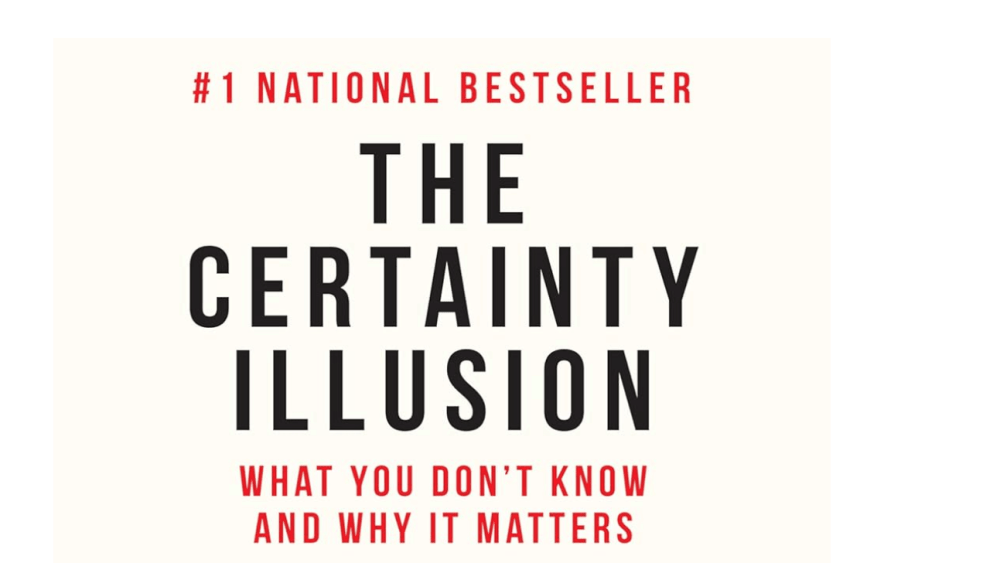The Illusion of Certainty: Navigating a World of Misinformation
In an era of information overload and rampant misinformation, Timothy Caulfield’s "The Certainty Illusion: What You Don’t Know and Why It Matters" serves as a crucial guide for navigating the complexities of knowledge and belief. Caulfield argues that our current information ecosystem isn’t merely flawed; it’s actively rigged to promote chaos and deception. He dissects how this system fosters illusions of certainty in science, goodness, and opinion, leading us astray with deceptive ease. The book explores the mechanisms by which these illusions are created and sustained, offering a framework for critical thinking and informed decision-making in a world increasingly saturated with dubious claims.
Caulfield introduces the concept of the "science illusion," where scientific jargon is employed to create an aura of unquestionable authority. He supports his arguments with a wealth of research, referencing hundreds of studies throughout the book. This illusion exploits our inherent trust in scientific language, often obscuring the underlying uncertainties and complexities of scientific endeavors. He highlights how marketing strategies often leverage this illusion, imbuing products with a veneer of scientific legitimacy to bolster consumer confidence. By critically examining the language used to present scientific information, we can begin to discern genuine scientific rigor from manipulative marketing tactics.
The "goodness illusion" is another powerful force shaping our perceptions. This illusion plays on our desire to make virtuous choices, associating products and ideas with moral superiority. Caulfield deconstructs the "health halo" effect, where certain products are perceived as healthier or "cleaner" based on unsubstantiated claims or misleading marketing. He uses the example of organic food, often marketed as inherently better, despite scientific evidence showing no significant nutritional difference compared to conventionally grown food. This illusion extends beyond food, encompassing concepts like "toxic masculinity" and even the allure of ancient alien theories. Caulfield argues that misinformation often leverages moral and emotional appeals, making it more readily accepted than complex scientific explanations.
The "opinion illusion," the third illusion explored in the book, centers on the persuasive power of collective anecdotes and online reviews. Caulfield exposes the inherent biases and limitations of online reviews, cautioning against relying solely on crowd-sourced opinions. He highlights the susceptibility of online platforms to manipulation, emphasizing the difficulty in distinguishing genuine reviews from fabricated ones. This illusion underscores the importance of critical evaluation and the need to seek out evidence-based information rather than relying on the potentially misleading wisdom of the crowd.
Caulfield proposes a seemingly straightforward solution to these pervasive illusions: "fix the way that science is funded, done, and communicated." While the premise is sound, he acknowledges the immense practical challenges involved in implementing such sweeping reforms. He advocates for increased transparency in research funding, rigorous methodologies, and improved communication of scientific findings to the public. However, these reforms require significant systemic change, challenging entrenched interests and requiring substantial resources. He encourages readers to engage with policymakers and advocate for these changes, but recognizes the difficulty of achieving such widespread reform in a politically charged environment.
"The Certainty Illusion" is a valuable resource for anyone seeking to navigate the complex information landscape of the 21st century. It provides a framework for identifying common tactics used to manipulate our perceptions and emphasizes the importance of critical thinking. The book is particularly beneficial for those new to the concepts of misinformation and manipulation, offering a comprehensive overview of the various strategies employed to deceive. Even for those already familiar with these issues, Caulfield’s book provides a cohesive synthesis of these concepts, reinforcing their importance and offering new perspectives.
While Caulfield’s proposed solutions may appear daunting, the book’s greatest strength lies in its ability to empower readers with the tools necessary to critically evaluate information and resist the allure of certainty in a world of uncertainty. By understanding the mechanisms behind these illusions, we can become more discerning consumers of information, making more informed decisions about our health, our values, and our understanding of the world around us. The book serves as a call to action, urging readers to engage critically with the information they encounter and to advocate for a more transparent and reliable information ecosystem.


